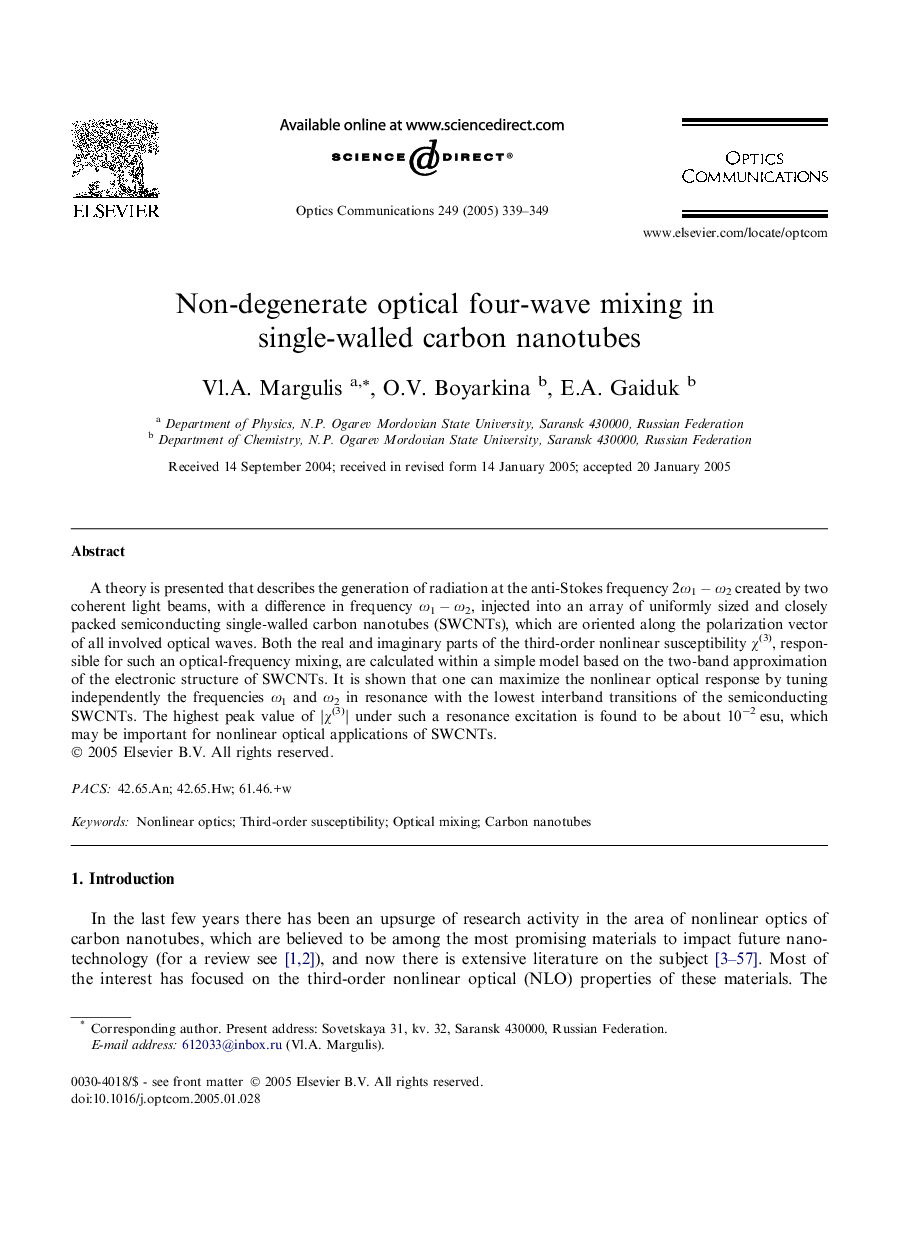| Article ID | Journal | Published Year | Pages | File Type |
|---|---|---|---|---|
| 9785941 | Optics Communications | 2005 | 11 Pages |
Abstract
A theory is presented that describes the generation of radiation at the anti-Stokes frequency 2Ï1 â Ï2 created by two coherent light beams, with a difference in frequency Ï1 â Ï2, injected into an array of uniformly sized and closely packed semiconducting single-walled carbon nanotubes (SWCNTs), which are oriented along the polarization vector of all involved optical waves. Both the real and imaginary parts of the third-order nonlinear susceptibility Ï(3), responsible for such an optical-frequency mixing, are calculated within a simple model based on the two-band approximation of the electronic structure of SWCNTs. It is shown that one can maximize the nonlinear optical response by tuning independently the frequencies Ï1 and Ï2 in resonance with the lowest interband transitions of the semiconducting SWCNTs. The highest peak value of â£Ï(3)⣠under such a resonance excitation is found to be about 10â2 esu, which may be important for nonlinear optical applications of SWCNTs.
Related Topics
Physical Sciences and Engineering
Materials Science
Electronic, Optical and Magnetic Materials
Authors
Vl.A. Margulis, O.V. Boyarkina, E.A. Gaiduk,
